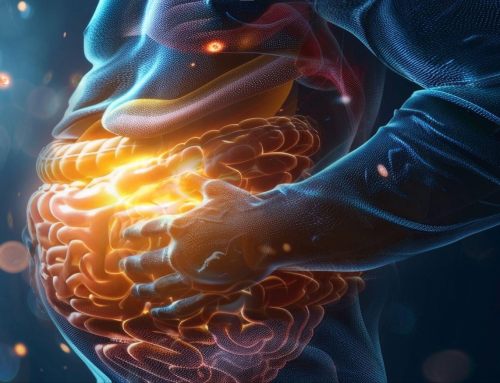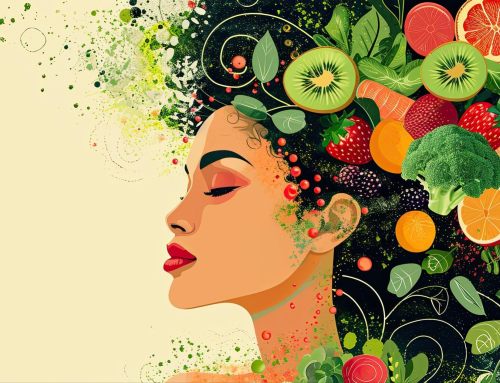Immune System Targets for Anti-Aging Therapies
Fractal-like, interconnected systems in the human body operate simultaneously at the macro and micro levels with varying degrees of overlap and influence. One advantage of these varying circles of influence is the ability to make a small change upstream with multiple positive benefits downstream.
Emerging as a hotbed for changes that can defy aging characteristics, the human immune system has proven to be a fertile research ground. The immune system is uniquely placed to influence aging, as it ranges all over the body defending against invading microorganisms and assisting healing. Many upstream changes in immune system cells have produced anti-aging effects in downstream organs and systems.
Predictions based on demographics contend that 1 in 6 people will be over the age of 65 in 2050 (1). The aches, pains, and chronic illnesses associated with an aging population ensure demand for strategies to prevent or slow aging. As mesenchymal stem cell therapy gains market space for restoring function to aging or injured body parts, its rough equivalent in the immune system makes hematopoietic stem cells (HSC) an appealing choice for research. HSC research in the murine model is promising for reversing or pausing aging characteristics at the cellular level. Unsurprisingly, many other types of cells in the immune system pantheon are also delivering anti-aging results (1). The results are so plentiful that this article will only focus on a few.
Immune System Dysregulation and Aging
Immune system dysregulation features prominently in aging. Aging in humans involves many complex factors played out in multiple micro and macro levels – the cellular, tissue, organ, organ system, and systemic levels.
Aging typically involves immunosenescence, a slow degradation of the immune system that is specifically age-related, accompanied by a low-level but chronic inflammation (inflammaging) that leads to a higher risk of incurring diseases and infections. Aging dysregulates the immune system by affecting the amounts of immune cells or how these cells perform their duties, potentially leading to inflammation-related chronic illnesses such as diabetes and cancer (1). These immune cells lend themselves to being targets of therapies attempting to control the downstream outcomes such as inflammation, immune dysregulation, and oxidative stress, ultimately helping prevent or delay the onset of chronic illness due to age-related factors.
EXAMPLE TARGET 1: Cdc42 Interaction with HSCs
Hematopoietic Stem Cells (HSCs) are cells that can differentiate into myriad blood cells. They have the potential to become myeloid (red, white, or platelet cells) or lymphoid (B, C, and Natural Killer) cells (1). Grown in the bone marrow, they are the “self-renewing” pool from which all types of blood cells are made throughout life (2).
Cdc42 stands for “cell division control protein 42 (1),” a protein that regulates cell polarity and adhesion of HSCs to the extracellular matrix, as well as being involved in cell migration and a variety of signaling pathways. This protein is involved in HSC aging, affecting how prolific self-renewal is. Cdc42 also has a hand in regulating inflammatory and anti-inflammatory cytokines, helping maintain cytokine homeostasis. Dysregulation in cdc42 is associated with the exhaustion of stem cells. In mice studies, increased cdc42 activity caused a decrease in the numbers of lymphoid precursors, meaning fewer B, C, and Natural Killer cells (1).
Cdc42 and HSC Aging – The aging process of HSCs can be accompanied by dysregulation of cdc42 activity, resulting in hyperactivity. This elevation of cdc42 activity can significantly reduce the number of lymphoid precursors and also cause the HSC cells to lose their polarity. A lack of lymphoid precursors would harm the normal functioning of adaptive immunity, increasing the risk of infection and potentially creating an inflammatory environment (1).
Blocking Cdc42 in HSCs Restores Cytokines to Youthful Levels – Knowing that cdc42 can be significantly elevated in aging HSCs, attempts have been made to block cdc42 function by using various inhibiting substances. In 2018, a study showed that inhibition of cdc42 resulted in reversing a previously noted (dysfunctional) change in the immune system, particularly involving HSCs, bringing them back to their primary state. Cdc42 activity-specific inhibitor (CASIN) is one of the inhibiting substances that can accurately target cdc42, assisting the migration of HSCs out of bone marrow. In older mice, CASIN restored cytokine levels to “youthful levels” and increased lifespan. Notably, CASIN also decreased circulating inflammatory cytokines (1).
Impacts of Cdc42 Inhibition – Blocking cdc42 activity through CASIN reduced inflammatory cytokines, significantly contributing to inflammaging. As chronic low-level inflammation due to aging, inflammaging can eventually lead to any inflammation-driven disease, such as autoimmune disorders, cardiovascular disease, diabetes, and cancer. While reducing inflammaging may not be considered by some to be directly anti-aging in nature, it can restore “youthful” levels of particular interleukin factors and interferon-gamma involved in the regulation of immune responses (3).
EXAMPLE TARGET 2: Sestrin Interaction with T-Cells
CD4 and CD8 T-cells are white blood cells from the lymphoid lineage of HSCs. As part of the adaptive immune system, which can recognize and protect against specific antigens, CD8 T-cells can kill pathogens and tumor cells directly because they are cytotoxic. CD4 cells kill pathogens indirectly by using signals to direct other immune cells to attack (1).
Sestrin and Aging T-Cells – Aged CD8+ T-cells can switch to activity similar to Natural Killer (NK) functionality by expressing NK receptors and reducing their normal T-cell receptor (TCR) levels. This phenotype switch may reduce overall adaptive immune response because they no longer contribute to that response. However, it allows the cells to act like part of the innate immune system, able to remember and respond to foreign invaders without having to recognize any antigens involved. The protein that mediates this response is sestrin.
Sestrins are proteins associated with aging that can regulate metabolic processes and multiple other proteins involved in aging. They have numerous roles designed to protect organisms from various types of stress (starvation, DNA damage, oxidative stress, and endoplasmic reticulum stress) (4). When triggered by stress, sestrins activate AMP-dependent protein kinase (AMPK) to achieve many of its ends. Activated AMPK then synthesizes proteins, oxidizes fats, and modulates glucose intake.
Sestrin Inhibition in T-Cells – Blocking sestrin proteins can reverse the phenotype switching, restoring normal T-cell function to CD8+ cells (1). However, inhibiting sestrin can also prevent the ability of T-cells to produce inflammatory chemicals that can damage the body. It reins in the inflammatory response.
Researchers are interested in the role of P38, a protein kinase that plays a part in regulating the inhibition of sestrin. P38 can phosphorylate sestrin, preventing it from activating the AMPK pathway by preventing sestrin from binding AMPK properly. Through P38 inhibition, sestrin inhibition has been shown to grow the ends of telomeres, which would otherwise naturally shorten with age (1).
P38 is a downstream pathway to multiple upstream pathways (for example, Nrf2, mTORC1, and AMPK) involved in conditions that represent stressors to sestrins. Notably, P38 is downstream to AMPK in immune dysregulation stressors, marked by T-cell senescence and hyper-inflammation (4). As previously noted, inflammation drives many metabolic diseases and inflammaging. Researchers are interested in inhibiting sestrins by inhibiting P38 to discover health benefits since these mechanisms are involved in many chronic health conditions.
InhibitingsestrinsinTcells can inhibit the mTORpathway, having the effect of decreasingcellularsenescence. Decreased senescence can have a widespread anti-aging impact on multiple organ systems, including the brain, liver, and heart (5). Cognitive and cardiovascular functions would likely improve as a result of these manipulations.
Conclusion
Immune cells protect the body from pathogens and aging at various micro and macro levels. The cascade of immune functions often lies upstream from and affects vital processes in the body, making them attractive targets for preventing aging. Inhibiting immune cells through various molecules such as sestrins, p38, cdc42, and related pathways makes it possible to slow or reverse specific processes associated with aging, including the inflammation that drives so many chronic illnesses. There are so many potential targets for this type of manipulation that anti-aging immune therapies rivaling current stem cell therapies will likely be available to the general public soon.
Sources:
- Borgoni S, Kudryashova KS, Burka K, de Magalhães JP. Targeting immune dysfunction in aging. Ageing Res Rev. 2021 Sep;70:101410. doi: 10.1016/j.arr.2021.101410. Epub 2021 Jul 17. PMID: 34280555.
- Eaves CJ. Hematopoietic stem cells: concepts, definitions, and the new reality. Blood. 2015 Apr 23;125(17):2605-13. doi: 10.1182/blood-2014-12-570200. Epub 2015 Mar 11. PMID: 25762175; PMCID: PMC4440889.
- Florian MC, Leins H, Gobs M, Han Y, Marka G, Soller K, Vollmer A, Sakk V, Nattamai KJ, Rayes A, Zhao X, Setchell K, Mulaw M, Wagner W, Zheng Y, Geiger H. Inhibition of Cdc42 activity extends lifespan and decreases circulating inflammatory cytokines in aged female C57BL/6 mice. Aging Cell. 2020 Sep;19(9):e13208. doi: 10.1111/acel.13208. Epub 2020 Aug 4. PMID: 32755011; PMCID: PMC7511875.
- Chen Y, Huang T, Yu Z, Yu Q, Wang Y, Hu J, Shi J, Yang G. The functions and roles of sestrins in regulating human diseases. Cell Mol Biol Lett. 2022 Jan 3;27(1):2. doi: 10.1186/s11658-021-00302-8. PMID: 34979914; PMCID: PMC8721191.
- Yunfeng Sun, Yawei Wu, Shuting Tang, Hao Liu, Yingping Jiang, Sestrin proteins in cardiovascular disease, Clinica Chimica Acta, Volume 508, 2020, Pages 43-46, ISSN 0009-8981, https://doi.org/10.1016/j.cca.2020.05.013. (https://www.sciencedirect.com/science/article/pii/S0009898120302114)












